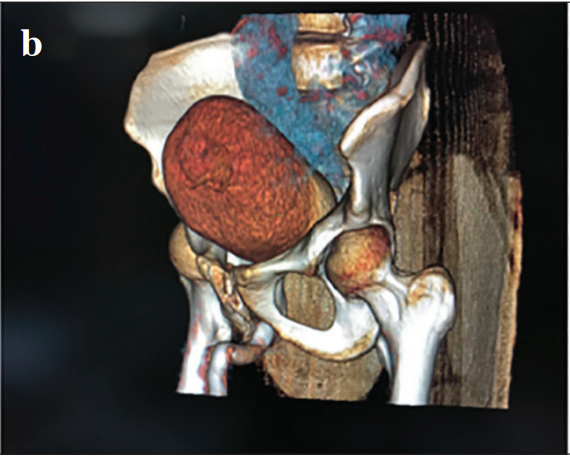Objective: Urethral injury occurs in 10% of patients who suffer from pelvic fractures. Urethroplasty is performed after an interval of 3 months to stabilize the perineal hematoma. It has been reported that the rate limiting step in anastomotic urethroplasty is finding the posterior urethra. Even for the most experienced surgeons, at times, this step can be challenging. The aim of the present study was to describe a novel technique for understanding the three-dimensional (3D) anatomy which would also help in surgical planning and making urethroplasty easy, a step ahead of conventional imaging.
Material and methods: Ours is a tertiary referral center with an experience of >1307 cases of pelvic fracture urethral distraction defects. This study was conducted between January 2018 and July 2018. Ethics approval was obtained. No patients incurred any cost for the study. A computerized tomography scan was performed with the bladder filled with contrast saline, and the same solution was injected into the anterior urethra, with a gauze piece tied around the glans. 3D images were then reconstructed, and data were transferred to the 3D Ultimaker™ printer. 3D models were printed to mimic the anatomy of pelvic fracture urethral distraction.
Results: A total of 10 models were created. The models, along with conventional urethrogram, were shown to fellows and observers. Visually, they gave a score of 4.3/5. In correlation with urethroplasty, understanding the anatomy of the posterior urethra was also important.
Conclusion: 3D printing can be applied to pelvic fracture urethral injury to understand the anatomy of the posterior urethra, its distance from the rectum, length of gap, relation to the posterior urethra, direction of displacement of the urethra, and if pubectomy is required or not.
Cite this article as: Joshi PM, Kulkarni SB. 3D printing of pelvic fracture urethral injuries-fusion of technology and urethroplasty. Turk J Urol 2020; 46(1): 76-9.

.png)
.jpg)
.png)
.png)
